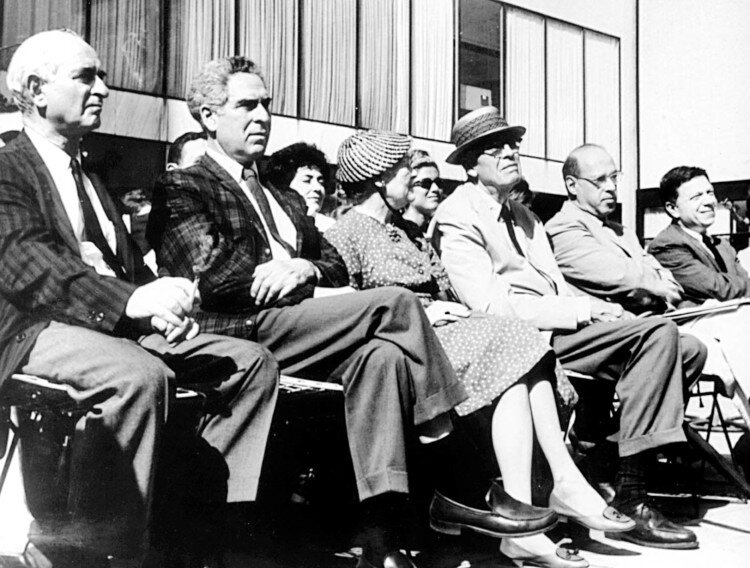History
Founded in March 1947, Artists Equity's original mission was to promote opportunities for artists and address business and economic issues affecting American artists. At the end of the Works Progress Administration (WPA) era of government patronage, artists were once again on their own. Even the most successful American artists of the day felt the need to create an organization that would protect them from fraudulent practices, provide group health insurance and disseminate information about the business of art.
The organization was originally called Artists Equity Association (AEA). It was created by more than 160 leading American artists of the 1940s, including Will Barnet, Thomas Hart Benton, George Biddle, Paul Cadmus, Stuart Davis, Arthur Dove, Marsden Hartley, Edward Hopper, Leon Kroll, Jacob Lawrence, John Marin, Louise Nevelson, John Sloan and the first President Yasuo Kuniyoshi. These diverse artists were all clear on one point -- they had to band together to establish and protect artists' economic well-being.
“If a bomb had dropped on the Museum of Modern Art the evening of April 30, it would probably have set American art back a quarter century. A good majority of the biggest art names in the country were on hand for the official ‘coming-out’ meeting of the newly formed Artists Equity Association.”
Artists Equity banquet in honor of Yasuo Kuniyoshi, 1948. (Mitzi Gallant Papers, Archives of American Art, Smithsonian Institution)
AEA was quick to act on the need to include not only artists but all the business people who artists interact with in the course of their careers, including art dealers, galleries, museum curators and administrators, publishers and collectors.
The organization grew quickly, with membership increasing from 300 in 1947 to 1,800 in 1952, and chapters were opened in many states. In 1965, the New York chapter of AEA, which had always had a significant majority of members, was the voice of AEA and was the driving force for the organization’s decisions, officially split with the national administration. In 1991, the organization, officially known as New York Artists Equity Association, Inc. (and referred to by its members simply as “Artists Equity”), became a 501(c)(3) non-profit organization. Later that year, Artists Equity received a grant from the Robert Lehman Foundation enabling it to open the Broome Street Gallery at 498 Broome Street in New York City.
Although the Broome Street Gallery closed in 2011, Artists Equity has pursued its mission to promote opportunities for artists and to advocate for artists. It has continued to monitor legislative issues, disseminate information on legal rights and educate members on healthcare and immigration.
In October 2015, Artists Equity opened a non-profit art space on the Lower East Side of New York City.
Adapted in part from Regina Stewart's essay on the occasion of Artists Equity's 60th Anniversary. Regina Stewart was Executive Director of Artists Equity from 1993 to 2015.
Symposium held at the Museum of Modern Art, 1962. Left to right: Elias Newman, Chaim Gross, Mrs. Edward Hopper, Edward Hopper, Joseph Hirsch and Abram Lerner. (New York Artists Equity Association archives)


